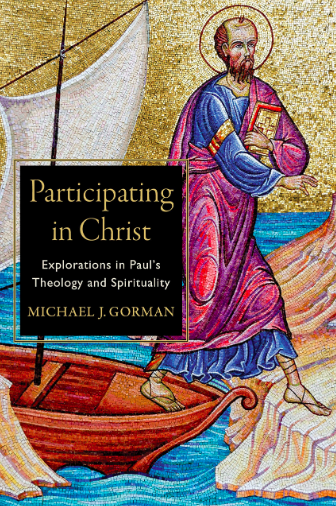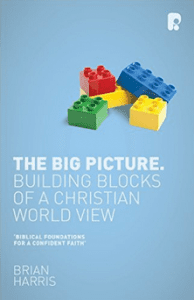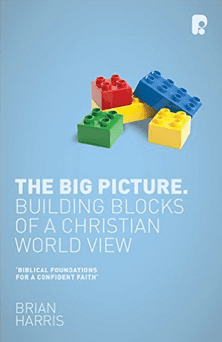This review is by Kyle Strobel, author of Metamorpha: Jesus as a Way of Life, and Kyle reviews a new book on the Trinity: Rethinking the Trinity and Religious Pluralism: An Augustinian Assessment (Strategic Initiatives in Evangelical Theology) by Keith E. Johnson.
 It wasn’t all that long ago that theologians could bemoan the utter neglect of the Trinity in both theological discourse and Christian practice. What the church is currently experiencing is the opposite reality – a resurgence of the Trinity into nearly every facet of Christian existence. That may, of course, not be a bad thing, but the million dollar question remains: Has the church actually revived the doctrine of the Trinity or not? In other words, as the Trinity is used to develop ecclesiology, personhood, questions of gender, leadership models, therapeutic methods, environmental ethics, human rights, and even religious diversity, we have to ask: Is the actual orthodox understanding of the Trinity being utilized, or have we snuck something else in under the same name? Ultimately, Keith Johnson’s book, Rethinking the Trinity & Religious Pluralism seeks to answer that question.
It wasn’t all that long ago that theologians could bemoan the utter neglect of the Trinity in both theological discourse and Christian practice. What the church is currently experiencing is the opposite reality – a resurgence of the Trinity into nearly every facet of Christian existence. That may, of course, not be a bad thing, but the million dollar question remains: Has the church actually revived the doctrine of the Trinity or not? In other words, as the Trinity is used to develop ecclesiology, personhood, questions of gender, leadership models, therapeutic methods, environmental ethics, human rights, and even religious diversity, we have to ask: Is the actual orthodox understanding of the Trinity being utilized, or have we snuck something else in under the same name? Ultimately, Keith Johnson’s book, Rethinking the Trinity & Religious Pluralism seeks to answer that question.
The main thrust of this volume is to engage the uses of the Trinity in the context of religious pluralism with the trinitarian thought of Augustine. Augustine, it is taken, broadly provides authoritative teaching from the church on this issue. My focus, by contrast, is to address Johnson’s main argument and show why it is meaningful for the broader questions noted above. While his discussion of religious pluralism is both in-depth and fascinating, I think there is a broader appeal that will be more helpful for this blog. Johnson develops this broader scope in the final chapter entitled: “Rethinking the Relevance of the Trinity.” Doing so naturally raises some important questions: Is the Trinity a model or blueprint that can be utilized for societal or ecclesial issues? Historically, have there been methodological restrictions on the doctrine of the Trinity? We could put further questions to our own theologies and ministries: How do we invoke the doctrine of the Trinity? Do we? If so, what are we doing when we do so? If not, why?
Before turning to some key questions Johnson poses, as well as some hermeneutical considerations for the doctrine of the Trinity, let me foreshadow these a bit with Johnson’s overall view. Johnson fits within a growing movement in the academy that argues that the retrieval of the doctrine of the Trinity has often failed to retrieve the doctrine of the Trinity. Rather, the term “Trinity” is invoked in a variety of situations and circumstances as a model to use to make your point. In other words, the Trinity has become something of a trump card in our day and age, even if the actual doctrine of the Trinity continues to be neglected. Furthermore, with his use of Augustine, Johnson is also in league with a broad movement of academics to undermine the claim that there were two distinct models of the Trinity in the early church, the West and the East, or what might be called the Oneness-Threeness paradigm. On this view, Augustine is the paradigmatic figure for the West, who starts with oneness and therefore never adequately outlines threeness in God, whereas the Cappadocian theologians (Basil the Great, Gregory of Nyssa, and Gregory of Nazianzus), start with threeness and a robust understanding of personhood and communion. It should be said that schema is now understood to be false.
Johnson offers material to interrogate proposals utilizing the doctrine of the Trinity as a model or a blueprint, that I paraphrase as five questions:
1. Apart from specific scriptural guidance, how do we determine what implications follow from God’s inner architecture? (201) In other words, there is a popular movement to make God’s inner-life a model that we then wield for our own agenda, even if that agenda ultimately undermines Scriptural mandates. One’s account of a specific aspect of the Trinity becomes the trump card.
2. Is there an adequate Christological mediation in place to bridge the Creator-creature distinction, or does this distinction collapse? In other words, because God is wholly other, there is no straight line to draw between his life and our own. (202) Christology is a more adequate starting point to talk about God’s life and relation to his creation than attempting to abstract a model from God’s inner-life.
3. Is the proposal a projection of our own concerns into the doctrine of God that is then used to justify and advance our own presuppositions? In other words, are we using the doctrine of the Trinity as something of a magic 8 ball to answer whatever pressing problem we are concerned with, and reading the doctrine in such a way that our presuppositions are enforced? (203)
4. Do the “trinitarian” blueprints maintain the language of Scripture or are imperatives drawn from this speculative architecture built, most likely, for the very purpose of making the blueprint that goes beyond or in another direction from the biblical text? In other words, are blueprints created to answer a question according to pre-set presuppositions that cannot otherwise be justified? This is an important point for Johnson’s interaction with certain thinkers’ use of the Trinity to establish an account of religious pluralism.
5. In light of number four particularly, we need to ask if appeals to the immanent Trinity support general claims or are made to support specific ideological accounts. In other words, the general claim: “God is one and therefore the church should be one” is true, but it does not help to establish a specific ecclesiology. (206) Likewise, we can say “God is love, and therefore we should love one another,” but it would be a mistake to establish a detailed account of God’s life of love beyond the Scriptural account and use that to create a methodology or model for our life.
While these questions may help us carve out illegitimate uses of the doctrine of the Trinity, they only go so far in helping to detail legitimate uses of the doctrine. Fortunately, Johnson outlines six purposes of trinitarian reflection, all of which are based on Augustine’s doctrine of the Trinity:
1. Theological purpose: Rather than focusing on making a blueprint to use, the doctrine of the Trinity is fundamentally about God.
2. Doxological purpose: “Trinitarian teaching shapes the liturgical practices of the church including gospel proclamation, baptism, prayer, worship, preaching and communion.” (210)
3. Hermeneutical purpose: Trinitarian doctrine serves as a “rule of faith” that shapes our reading of Scripture.
4. Anthropological purpose: Knowing God as triune is tied to knowing oneself as made in the image of God.
5. Formative purpose: The doctrine of the Trinity is to set our minds on who God truly is as Father, Son and Holy Spirit. The pilgrim sees “through a glass darkly,” but she sees nonetheless. Therefore the sight known in contemplation is a precursor of the sight that will be known in eternity. Seeing, in any form, is tied to becoming.
6. Soteriological purpose: The doctrine of the Trinity outlines not only who God is, but who God is for us, and therefore addresses the core of soteriology.
This book is excellent in many ways. Johnson knows this material incredibly well. He is conversant in the major contemporary debates about the Trinity, Augustine, and religious pluralism, and he does a remarkable job navigating this material for readers who might not be familiar with it. It is an academic work but he continually defines academic jargon for the reader. If you want to dive into the doctrine of the Trinity, this is as good a book as any at doing that. His main purpose, to show that uses of this doctrine have not remained faithful to it, are devastating, as far as I can tell, to the theories he engages. Nevertheless, his engagement is generous at every turn. This is a top notch book, and would be a worthwhile meditation for anyone interested in how the doctrine of the Trinity functions in Christian thought.











